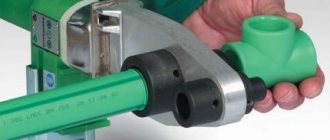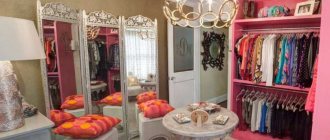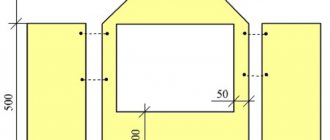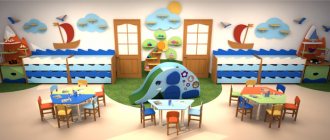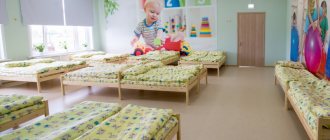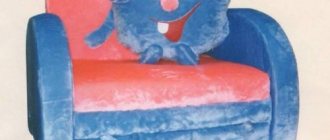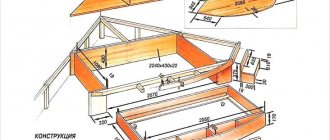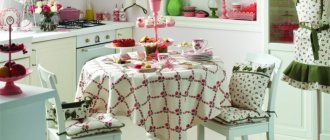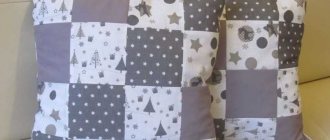Felt
You can create a puppet theater from felt with your own hands. For fairy-tale characters, multi-colored material is purchased.
The pattern is made according to the hand size of the person who will perform the performances for children. You can use mittens as a base. Be sure to allow seam allowances. The parts must be sewn by hand or by machine.
Now you need to make the head. Its size depends on the personal wishes of the master. Two circles are sewn together. The head is shaped using filler. Cotton wool and padding polyester are suitable for this.
The same pattern is used to make tails and paws for animals or pets. Now you need to draw a face, glue ears and hair. The eyes will become beads or buttons.
Multifunctional screen as an element of the subject-spatial development environment in a preschool educational institution
Kosova Love
Multifunctional screen as an element of the subject-spatial development environment in a preschool educational institution
Goal: creating favorable conditions for the development of children in accordance with their age and individual characteristics, optimizing subject-spatial conditions in preschool educational institutions .
A multifunctional screen will help solve the following problems:
• provide children with the opportunity to independently change the playing environment to enrich the gaming experience;
• form a holistic picture of the world, broaden your horizons;
• form elementary mathematical concepts ;
• work on sound pronunciation and coherent speech.
• develop all components of children's play: enrichment of game actions, themes and plots of games, the ability to establish role-playing relationships, conduct role-playing dialogue, create a role-playing environment, act in a real and imaginary game situation;
• promote the development of the child’s thinking , stimulate mental processes and develop creative activity, create conditions for the further development of independent theatrical and role-playing games, role-playing behavior and interaction with children;
develop visual , auditory attention, memory; improve fine motor skills of the hands.
• cultivate friendly relationships between children in play;
Relevance of the manual.
The Federal State Educational Standard for Preschool Education is based on one of the basic principles: “Implementation of the Program in forms specific to children of a given age group, primarily in the form of play, cognitive and research activities, in the form of creative activity that ensures the artistic and aesthetic development of the child .” .
Any preschool education program sets a goal - the development of the child’s personality . It is the environment that is one of the main means of developing a child’s personality , the source of his individual knowledge and social experience.
It is fundamentally important that in the daily routine and in space an opportunity is created for children to control (purposefully and consciously change)
the environment . This ensures the flexibility and variability of the group environment , which is stated in the Federal State Educational Standard for Education. A developing subject-spatial environment should provide the opportunity for communication and joint activities of children and adults, physical activity of children, as well as opportunities for privacy. A developing subject-spatial environment must be content-rich, transformable, multifunctional, variable, accessible and safe. The environment in which a child spends up to 12 hours a day is not just a concomitant condition for normal development , but also an educational tool . The group setting and surrounding objects either promote curiosity, creativity, bold trials and discoveries, or block all this due to strictly limited space .
In order for the subject-spatial development environment to act as educational , mobile and easily changing, I came to the decision to create a universal multifunctional screen for use in play, theatrical and cognitive-educational activities of children.
Characteristics of the benefit.
I would like to draw attention to the fact that the development of perception occurs in the learning process. In this regard, it is necessary to create conditions for the intensive accumulation of various ideas about color , shape, size, texture, both in a specially organized process of direct educational activities and in everyday life. Thus, it should be especially emphasized that it is targeted training and mastery of various actions with objects that lead to perception becoming more detailed, complete and accurate. An object is perceived by a child from the point of view of its various inherent properties.
The base of the screen is made of polypropylene pipes with a diameter of 2.5 cm. It consists of three parts, each of which measures (80 cm * 120 cm, from the bottom to the middle pipe - 70 cm , interconnected by fastenings.
Fabric panels and curtains are attached to the frames; they are removable, as they are secured with Velcro, which makes it possible to quickly and easily remove or secure the panels.
The benefit is safe for children and sustainable.
The first section of the screen has transparent pockets of different formats.
This section can be used as a stand in all educational areas, during organized educational activities, in organized joint activities, to demonstrate didactic pictures, visual aids, various diagrams, etc. in order to broaden the horizons of children and form a holistic picture of the world.
In addition, this section can be used to design role-playing games using illustrations on various topics.
The second section of the screen has curtains and fabric pockets. You can put attributes for games or performances in them.
This section can be used in joint organized activities and in independent activities of children, as well as for role-playing games. In these types of activities, the integration of all educational areas is visible: social and communicative development , artistic and aesthetic, speech, cognitive development , as well as physical development (for example, finger theater)
.
The use of screens in various role-playing games contributes to the development of children's creative and communication abilities; enriches social experience, the stock of playful activities with toys; develops independence , initiative, creativity. Examples of role-playing games: “Shop”
,
“At the doctor’s appointment”
,
“Pharmacy”
,
“Kindergarten”
,
“Hairdresser”
,
“Family”
.
The important point is that children can independently organize the play space , develop a plot , offer interesting game ideas, take initiative, distribute roles among themselves , and have the opportunity to use a variety of attributes and illustrations.
Play is not only a beneficial condition for children’s speech manifestations, but also an effective means of influencing the quality of children’s speech.
Role-playing games promote children’s independent expressions and activate a certain group of vocabulary : “professional”
the language of a teacher, doctor, seller, housewife, etc.
Another important means of increasing children’s speech level is theatrical activities. It is through theatricalization that children get acquainted with the world around them in all its diversity : through images, colors, sounds. Theatrical games are the most important factor stimulating the development of coherent speech in children. In a theatrical game, each child can express his emotions and feelings, not only in private, but also publicly, without being embarrassed by the presence of listeners, he tries to speak clearly so that everyone understands him.
I also think it is important that the presence of a screen will help implement a gender approach in the upbringing of preschool children. The formation of gender identity for boys and girls is possible only in a joint environment where boys and girls have the opportunity to communicate, play, and work together. It is in role-playing games that children learn gender behavior. Children's play reflects the traditional view of the roles of men and women in society. The game also lays the foundations of morality: generosity, reliability, respect for each other, kindness, patience.
The sides of the screen can be placed at different angles, used to divide space , for games based on interests. Or to separate the noisy games of boys from the quiet games of girls.
In the games "Chauffeurs"
,
“Sailors”
can use flat models of various types of transport made of fabric, which are easily attached to the
screen . Pockets are provided for hats, capes, and attributes needed in the game . All this contributes to the children’s implementation of the game plan associated with the elementary professional actions of people. The more diverse the material offered by teachers , the more opportunities preschoolers have to complicate the game.
The third section of the screen has a canvas with strips of Velcro tape attached to it, intended for attaching didactic pictures, counting material, and also for showing theater.
The section can be used during organized educational activities, joint organized activities, as well as in independent activities of children.
Didactic games have always been given great importance. With the help of didactic games, children are taught to think independently and use acquired knowledge in various conditions, in accordance with the assigned game task. Games that promote the development of perception , attention, memory, thinking, and the development of creative abilities are aimed at the intellectual development of the preschooler as a whole .
Methods of use (didactic games and exercises, conversations)
— D/i “Name the color”
.
Strengthen the ability to distinguish primary colors in a playful way. Develop visual attention and memory. Foster independence and perseverance;
-D/i “Recognize and name the fruits”
.
Teach children to recognize and name fruits;
— D/i “Call me affectionately”
.
Teach children to form the diminutive form of nouns;
— D/i “Find by description”
.
Develop and consolidate knowledge about the appearance of natural objects (animals, plants, fish, insects, etc.)
.
Develop memory and speech.
- D/i “When does this happen?”
Continue to develop children's knowledge about the seasons and name them in a certain sequence , about changes in living and inanimate nature;
- D/i “What happens when?”
Clarify and consolidate children’s knowledge about seasonal changes in nature and animal life in different seasons of the year;
— D/i “Seasons”
.
Know the seasons and name them in a certain sequence ; find pictures that correspond to a given time of year;
- D/i “What is the train carrying?”
Develop an understanding of objects and their belonging to one group. Develop vocabulary ;
-D/i “One is many ”
.
Teach children to form the plural of nouns;
-D/i “Find identical objects ”
.
Learn to find an object by similarity . Develop visual memory , auditory attention, intelligence. Cultivate observation skills.
Various options for didactic games and exercises are possible, depending on the educational objectives set by the teacher and the design of the manual.
Working on this part of the screen , you can also trace the integration of all educational areas.
I hope that the screen will become truly multifunctional and will help create favorable conditions for the development of cognitive processes, intellectual development of children , as well as creative activity in various activities.
The screen can be used as a corner of solitude, as psychological relief and stress relief for children.
The screen with an additional fabric - a curtain, with which children can play in privacy inside. The curtain is made of transparent fabric, so you can clearly see what is happening inside the screen .
Thus, the use of a multifunctional screen allows the teacher to create conditions for children to freely choose activities; making independent decisions; pupils expressing their feelings and thoughts; support children's initiative and independence in various activities.
There are additional elements for role-playing games and decorations, which are also attached to the screen panels with Velcro tape .
Bibliography:
A.K. Bondarenko. Didactic games in kindergarten. A book for kindergarten teachers. – M.: Education , 2001.
N. Ya. Mikhailenko, N. A. Korotkova. How to play with a child. – M.: Obruch, 2012.
I. A. Lykova. Didactic games and activities - M.: Karapuz, 2009.
How to make a screen for kindergarten
It is not difficult to make this device yourself for a preschool institution. It will take a little time and inexpensive materials.
What is the main task? It is important that the structure is stable and highly durable. The device will always remain in the center of children's attention. Therefore, adults need confidence that the screen will withstand active use.
The screen develops management skills and also provides more space for games and creativity.
In addition, sharp corners and heavy parts should be avoided as they may injure small children.
The design will become even more versatile if the fabric is secured to the frame with Velcro. This will help you design the screen differently each time, in different variations: change it as needed, depending on your needs.
As a rule, the standard model of a screen made of PVC pipes is made with three sections.
Materials and tools
Before you begin the task of making a theater screen for a kindergarten with your own hands, you should stock up on the necessary tools.
As mentioned above, the simplest and most affordable material for making a frame is polypropylene pipes. They are inexpensive, but they are durable and strong.
You will need propylene pipes of various lengths, plastic corners and double-sided fasteners to connect the sections to each other.
To connect pipe fragments, plastic fittings are used. The latter are fastened using a soldering iron specially designed for this type of work. Soldering takes very little time (literally a few minutes), so you don’t have to purchase this tool: it will certainly be found in the workshop of one of the children’s parents.
What else is needed for the production of a multifunctional screen? This:
- marker;
- roulette;
- fitting;
- scissors;
- fasteners;
- textile;
- saw for cutting pipes.
And, of course, the plastic pipes themselves (to avoid cutting, they can be purchased at the store in the required length).
Making a screen from plastic pipes with your own hands will not require large expenses.
Manufacturing process
The work is carried out in several stages. First you need to draw up a drawing of the screen with dimensions. Then pipes of the appropriate length are cut.
Next they are engaged in the manufacture of the frame. To do this, use a soldering iron: heat the ends of the base material, as well as the fittings. Then connect, lightly squeeze (a few seconds will be enough). And in order for each part of the screen to move relative to each other, special plastic connecting elements are used. They should be put on the pipes, then fastened together with a soldering iron.
A special machine for welding plastic pipes made of propylene, which is used by professional plumbers during installation, can be a good help.
To sew the covers, pieces of fabric are cut out in a size suitable for the intended sections (it is advisable to stitch the edges). The fabric is fixed with special fasteners (buttons or Velcro).
Next, you can begin painting and decorating the structure. Paint the plastic elements of the screen. And interesting decor can be provided by appliqués or cut out figures and so on.
You can make an equally interesting application to the screen. To make it easier to organize performances and all kinds of exhibitions, it is advisable to attach fabric or transparent plastic pockets and put the necessary equipment there. And if the screen is used in a nursery group, such pockets can be made larger and large drawings can be inserted.
You can use any available fabric to sew covers.
Among other things, you can use stretched threads with clothespins or other fastening devices, which will also greatly simplify the task. While the product is not used for its main purpose, fabric covers can be replaced with ordinary garden netting. And on it, with the help of decorative clothespins, attach children’s drawings or photos, self-made ones, small (for example, soft) toys, as well as various educational materials.
In short, there are a lot of options for finishing, as well as for assembling the structure. In this case, everything depends on the creative thoughts and imagination of children and teachers. The process of making a screen itself can be turned into an entertaining and fun activity, making it a game in which every child can directly participate. And in the future, with such a multifunctional device, interesting and useful ideas can be translated into reality, which contributes to effective child development.
The fabric should be durable and easy to wash, since children's games are fraught with various consequences for any furniture, and the screen will not be an exception.
VIDEO: What you can do with your own hands from plastic pipes.
Multifunctional screen.
Everyone knows that in the preparatory group children master role-playing games well, play out various situations, and come up with their own theatrical performances.
I decided to update the screen we have in our group. And this is what I got.
The screen consists of three sections:
The middle section is designed to display theatrical performances, various types of theater and role-playing games.
Moreover, children can change the play area themselves, at their own discretion, with the help of hanging signs and objects that are secured with sewn rubber bands. If desired, you can remove the curtains that are attached to the screen using Velcro.
On the other side of the middle section there is a transparent pocket and hanging hooks for attributes.
The side section is designed for activity. It is equipped with a hanging board for drawing with chalk. For the convenience of placing art materials, transparent plastic cups are attached (also with rubber bands), which can be easily removed and washed.
To this board, with the help of beautifully decorated clothespins, you can attach a sheet on which you can draw and create appliqués. This section replaces the easel.
On the reverse side of this section there is a hanging board with flannelgraph, as the basis for a soft construction set, a theater. And there’s a lot more you can do with it, if you only have your imagination. A transparent pocket is sewn under the board for construction set parts and characters.
The third section is a mesh panel (from garden mesh). Using decorative clothespins, you can attach illustrations and children's drawings to the mesh. You can also attach ribbons and laces.
The multifunctional screen is made of durable material – leatherette. All panels of the screen are attached to the base using Velcro. With one easy movement, the screen can be dismantled and new panels or curtains can be attached.
Margarita Soboleva
Dear colleagues, I would like to present to your attention a multifunctional screen
“Hospital-tire service”
The screen
is intended for role-playing and theatrical games for preschoolers.
(Hospital for girls, tire service for boys)
I bring to your attention the process of creating a screen
.
Of course, I had to involve my husband in the work process. The frame of the screen
is made of wooden blocks held together by three plastic sheets and hinged to each other.
The first fold of the screen is the filling
.
The pictures are printed on a printer, the shoe box is covered with white paper, everything is covered with tape. The box is glued to the screen
double-sided tape.
The “Car Wash” door was made in the same way; my husband found the hoses for the boxes in his garage, with a detergent gun at the end of the hose. At the bottom of the car wash there is a box of car shampoo. (ordinary bottles of shampoo, pasted over with pictures)
The second panel “Tire service” - various tools, secured to
the screen with two blocks
.
On the other side screen,
the first door is “Ophthalmologist” - a picture with letters attached to tape for testing vision. There are also two compartments with various medicine boxes.
The second wing is an ambulance, with a stretcher made of fabric, a painted red cross is sewn to the stretcher with thread. The stretcher is removable and children are happy to carry their sick “patients” onto it.
And the third door of the screen is the doctor's office
, with a folding table, attached to
the screen with a loop
. Children love to put their phone, first aid kit on this table and receive calls.
This is the multifunctional screen I got
. Children love to play it. To my surprise, boys play hospital no less than girls, but girls, on the contrary, enjoy fixing cars!
Publications on the topic:
To make the screen we needed: wooden blocks, a jigsaw, a screwdriver or screwdriver, a furniture stapler, fabric, self-tapping screws.
Today I decided to show you through a photo report the process of my work on a new didactic game - a multifunctional educational game.
The game is intended to differentiate any two concepts (for example, sounds { з-ж}). If the child answered correctly, then when the button is pressed.
Master class “Making a screen from paper” Today I would like to introduce you to a screen to enrich the subject spatial environment. In our.
On June 10, Soyuzmultfilm studio turned 80 years old. We could not ignore this and the project “Soyuzmultfilm” was launched in our garden.
As a rule, we think about gifts on the eve of the holidays. Currently, stores offer a rich assortment and selection of different ones.
I bring to your attention a master class on making an “Atelier” screen for a role-playing game. To make a screen we will need: * Fabric.
He loves to fantasize and dreams of getting into a real fairy tale, where he can touch the hero and go on funny adventures with him. This opportunity may present itself if your house has its own home puppet theater.
DIY floor screen
To make such a partition you will need the following materials:
- white paint;
- ribbons;
- braid;
- buttons;
- Velcro;
- plastic plate;
- multi-colored fabric.
A thin sheet of fiberboard will be used as a frame. In this case, even a small sheet of frame furniture wall or thick cardboard can be useful - for strength, the two sheets are glued together.
Before you make a screen with your own hands, you need to prepare the following tools:
- emery;
- paint brush;
- saw;
- drill;
- jigsaw;
- sewing machine
When all the tools and materials are prepared, you can start working.
Performance in the doorway
Making a curtain in a door frame is the easiest and most budget-friendly way.
For this you will need:
- dense weave;
- rope;
- scissors;
- threads
A rope should be sewn to a piece of fabric of the required width, which will hold the entire fabric structure. As fasteners, you can nail a couple of nails or pushpins to the doorway.
It is better to choose a dark or colored material to avoid associations with a sheet. For decoration you can use fabric appliqués, beads, and braid.
Cardboard cutouts of clouds, the moon and the sun are attached to a rope.
The scenery will change during the performance using simple devices. For example, the sun may be hiding behind a cloud. Such simple special effects will cause great delight among kids.
How to make a screen for a kindergarten?
Making a screen yourself is not that difficult. Since the structure will be very actively used by children, it is important to make it durable, stable and safe. It is worth abandoning any heavy parts and sharp corners that are dangerous for small children.
Most often, the screen consists of three sections - a central one and two side ones, but variations are possible. As for the material with which the screen will be decorated, its choice can be made together with the children, and then the covering can be made from a single piece of fabric, or several multi-colored pieces can be used. Or you can make a more universal model, in which various coatings will be used, secured to the base of the structure using ties or Velcro and replaced, like scenery in a theater, depending on the task.
Materials and tools
Making a screen from plastic pipes with your own hands will not require large expenses. You will need propylene pipes of various lengths, plastic corners and double-sided fasteners to connect the sections to each other.
It is necessary to think through the design and calculate the amount of material.
All this can be taken after a recent renovation, or purchased at any specialized store for repairs.
The pipes are connected to each other using a plastic corner.
The sections are connected to each other with special double fasteners.
A special machine for welding plastic pipes made of propylene, which is used by professional plumbers during installation, can be a good help.
If you have nowhere to borrow it, you can also use the conventional heating method over the stove.
If desired, PVC pipes can be painted. For durability, you should use a mixture of putty and regular gouache.
Various ways to use multifunctional screens in kindergarten are suggested by the children themselves.
You can use any available fabric to sew covers. It must be remembered that it must be durable and easy to wash, since children's games are fraught with various consequences for any furniture, and the screen will not be an exception.
It is best to choose a bright and colorful material.
Depending on the design, you may need Velcro fasteners, ribbons or cords for garters, additional material for pockets or loops, and reliable adhesive.
Thanks to the principle of accessibility, children have the opportunity to independently change the space in their group at any time.
How to make a screen from plastic pipes
Having assembled all parts of the screen, they proceed to creating the overall structure. It is good to use double fasteners as connecting elements. If these are not available, then you can use plastic ties (clamps), which are characterized by high tensile strength with sufficient elasticity. Despite their versatility and ease of use, nylon ties have one drawback - they can only be used once.
The screen is assembled using double fasteners or a nylon tie
Sections of the screen will be in a movable state. Thanks to this, there will be no difficulties during transportation or moving to another place. This design can be used in a room of any size.
